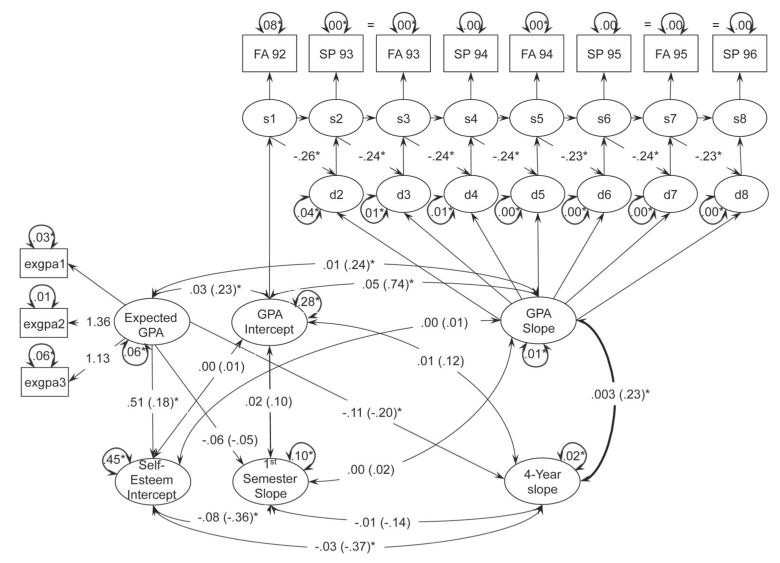Figure 4.
Effects of actual and expected grade-point average (GPA) on self-esteem-trajectory (Model 4a). The unit constant and associated means are omitted from the figure for simplicity. Manifest variables for self-esteem trajectory are omitted from the figure. Coefficients for demographic variables are presented in Table 5. Unstandardized estimates are presented in the figure. Standardized estimates are in parentheses. “FA92” refers to the manifest variables for GPA at the end of fall semester in 1992, and “SP93” refers to the manifest variable for GPA at the end of spring semester in 1993, and so on. The “s” projecting on to these variables refers to the latent status variables for GPA, and the “d” refers to the latent difference scores for GPA. “exgpa1” refers to the manifest variable, “What overall GPA do you think you are capable of attaining at UC Berkeley?” “exgpa2” refers to the manifest variable, “Realistically, what overall GPA do you think you will attain at UC Berkeley?” “exgpa3” refers to the manifest variable, “What is the lowest overall GPA you would be satisfied attaining at UC Berkeley?” * p < .05.

